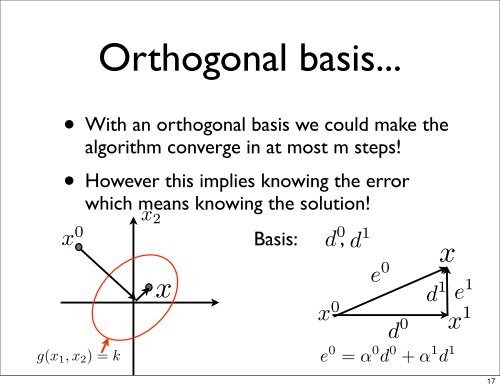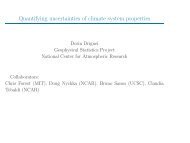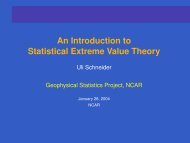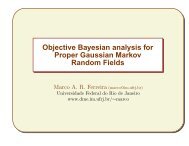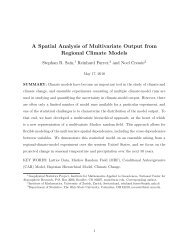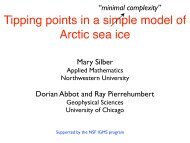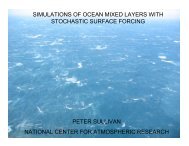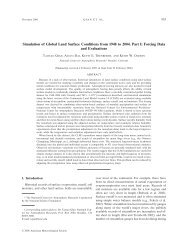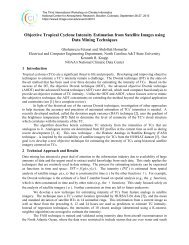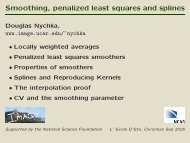Introduction to Krylov subspace methods - IMAGe
Introduction to Krylov subspace methods - IMAGe
Introduction to Krylov subspace methods - IMAGe
Create successful ePaper yourself
Turn your PDF publications into a flip-book with our unique Google optimized e-Paper software.
〈Ap, p〉r k 〉 = 〈r k , r k 〉 − 〈rk , r k 〉hat is p ?x k + 〈rk , r k 〉Orthogonal basis...+1 , r k 〈Ar∴ 〉 = k , r〈r 0 k 〉 rkk+1 : orthogonal , r k 〉 = 0 : orthogonalAx k + 〈rk , r k 〉〈Ar k , r k 〉 Ark〈r k+1 , r k 〉 = 〈r k , r kGradient • Methodb − AxWith an orthogonal basis we could make thek − 〈rk , r k 〉d5〈Ar algorithm k KRYLOV , r k 〉 Arkconverge SUBSPACE in at most METHODS ∴ m 〈rsteps!k+1 , r k 〉 = 0r k − 〈rk , r• k 〉nown 〈Ar k , However as(AKA) r k 〉 Ark this implies ”Steepest knowing the Descent(SD)errorwhich means knowing the solution!pest 〈r k , r k 〉 Descent(SD)”−Show 〈rk g(x, r k 〉 1that , x 2 ) = x 0 〈Ar k , r k 〉 〈Ark , r k converges〉as :g(x ( 1 , x 2 ) = kk 〉 = 0 : orthogonal p κ(A)Basis:= −−∇g 1,= −(Ax − b〈r k+1 , r k 〉 = 〈r k , r k 〉 − 〈rk , r k 〉〈Ar k , r k 〉 〈Ark , r k 〉〈Ar k , r k 〉 〈Ark , r k 〉 r k+1 = r k − 〈〈A∇g = −(Ax − b) = b − Ax = r(5.4), taking p = r 0 ,g(x 1 , x 2 ) = k) n d 0 d 1‖e n ‖ A ≤‖e 0 ‖ A ,κ(A) + 1 e 0 where ‖v‖ 2 A =x d 1 e 1e.g. Orthogonal basis of R 2 : d 0 , d 1 (d 1 ⊥ d 0 )x 1d 0e 0 = α 0 d 0 + α 1 d 117kg(x


